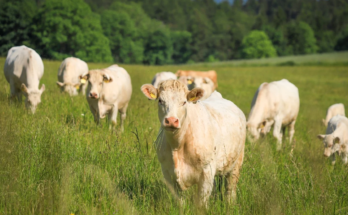Agriculture is an essential part of the global economy, contributing significantly to food security and rural livelihoods. However, farmers face numerous risks, including adverse weather conditions, pests, diseases, and market fluctuations, which can adversely impact crop yields and income. To mitigate these risks, Multi-Peril Crop Insurance (MPCI) has emerged as a vital tool for farmers. This article delves into the intricacies of MPCI, explaining its significance, functioning, coverage options, costs, and the claims process.
What is Multi-Peril Crop Insurance (MPCI)?
Multi-Peril Crop Insurance (MPCI) is a type of agricultural insurance that provides financial protection to farmers against a variety of risks that can lead to crop loss or revenue decline. Unlike traditional crop insurance, which may cover specific perils, MPCI covers multiple risks, including natural disasters, adverse weather conditions, pests, and diseases. This comprehensive approach allows farmers to safeguard their investments and maintain their income levels.
Key Features of MPCI
- Comprehensive Coverage: MPCI covers a wide range of risks that can affect crop production, providing farmers with a safety net against various uncertainties.
- Revenue Protection: In addition to covering yield losses, MPCI can also offer revenue protection, helping farmers maintain their income levels even when market prices fluctuate.
- Flexible Terms: Farmers can customize their MPCI policies based on their specific needs, choosing coverage levels and premium rates that align with their financial capabilities.
- Government Support: In many countries, MPCI is supported by government programs that subsidize premiums, making it more accessible to farmers.
Importance of Multi-Peril Crop Insurance
MPCI plays a crucial role in the agricultural sector for several reasons:
1. Risk Mitigation
Farmers are exposed to numerous risks that can jeopardize their crops and livelihoods. MPCI helps mitigate these risks by providing financial compensation in the event of crop loss due to covered perils. This safety net encourages farmers to invest in their farms without the fear of catastrophic losses.
2. Income Stability
Fluctuations in crop yields and market prices can lead to significant income instability for farmers. MPCI helps stabilize farmers’ income by ensuring that they receive compensation when their revenue falls below a certain threshold. This stability is vital for the long-term sustainability of farming operations.
3. Encouragement of Agricultural Practices
With the assurance of financial protection, farmers are more likely to adopt modern agricultural practices, invest in improved technologies, and explore innovative farming techniques. This can lead to increased productivity and sustainability in the agricultural sector.
4. Support for Rural Economies
By protecting farmers’ incomes, MPCI contributes to the overall stability of rural economies. When farmers can rely on a safety net, they are more likely to spend on local goods and services, supporting businesses and creating jobs in their communities.
How Multi-Peril Crop Insurance Works
Key Components
- Coverage Options: Farmers can select different coverage options based on their needs. Common options include:
- Yield Coverage: Protects against loss of crop yield due to covered perils.
- Revenue Coverage: Protects against revenue loss resulting from low yields or declining market prices.
- Price Elections: Farmers can choose different price elections to determine their coverage levels based on expected market prices.
- Premiums: The cost of MPCI is typically calculated as a percentage of the guaranteed amount. Premium rates vary based on factors such as crop type, geographic location, and historical yield data. Premiums are usually subsidized by government programs to make insurance more affordable for farmers.
- Indemnity Payments: When a farmer experiences a covered loss, they can file a claim for indemnity payments. The insurance provider assesses the claim and compensates the farmer based on the policy terms and the extent of the loss.
Example of How MPCI Works
Consider a farmer who grows corn and has chosen an MPCI policy with the following parameters:
- Guaranteed Yield: 150 bushels per acre
- Price Election: $4.00 per bushel
- Coverage Level: 75%
If the farmer’s actual yield drops to 100 bushels per acre due to a drought, the indemnity payment would be calculated as follows:
- Guaranteed Revenue: 150 bushels x $4.00 = $600
- Actual Revenue: 100 bushels x $4.00 = $400
- Indemnity Payment: ($600 – $400) = $200
In this scenario, the farmer would receive an indemnity payment of $200 per acre for the loss in revenue.
Types of Risks Covered by MPCI
MPCI provides coverage against a wide range of risks, including:
1. Adverse Weather Conditions
- Drought: Insufficient rainfall can severely impact crop yields, leading to significant financial losses.
- Flooding: Excessive rainfall can lead to waterlogging and crop damage, affecting overall production.
- Frost: Late spring frosts can damage young plants, resulting in reduced yields.
2. Pests and Diseases
Pests and diseases can devastate crops, leading to significant losses. MPCI covers losses resulting from outbreaks of harmful insects or plant diseases.
3. Natural Disasters
Natural disasters, such as hurricanes, tornadoes, and hailstorms, can cause extensive damage to crops. MPCI provides protection against losses incurred due to such events.
4. Market Fluctuations
MPCI can also offer revenue protection, compensating farmers for income losses caused by declining market prices for their crops.
Costs of Multi-Peril Crop Insurance
Understanding the costs associated with MPCI is essential for farmers. Here are the main cost components:
1. Premiums
The cost of MPCI premiums varies based on several factors, including crop type, coverage level, and geographic location. On average, premium rates may range from 1% to 15% of the guaranteed amount. Government subsidies often help reduce the financial burden on farmers.
2. Deductibles
Many MPCI policies include deductibles, which are the amounts farmers must cover before insurance payments are triggered. Deductibles can range from 10% to 30% of the loss, depending on the policy terms.
3. Administrative Fees
Insurance providers may charge administrative fees for managing policies. These fees can vary but typically range from $50 to $300 annually.
4. Total Cost Example
For a farmer with the following parameters:
- Guaranteed Revenue: $100,000
- Premium Rate: 5%
- Deductible: 20% of indemnity payment
- Administrative Fee: $100
The total annual cost for MPCI would be:
- Total Premium: $5,000 (5% of $100,000)
- Total Cost: $5,000 + $100 = $5,100 (excluding potential indemnity payments).
Factors Influencing Premium Costs
Several factors can influence the cost of MPCI premiums:
- Crop Type: Different crops have varying risk profiles, and premiums will reflect the associated risks.
- Geographic Location: Regions prone to specific weather-related risks may have higher premiums due to increased exposure.
- Coverage Level: Higher coverage levels generally result in higher premiums, as they provide more extensive protection.
- Historical Yield Data: Farmers with a history of consistent yields may benefit from lower premiums compared to those with a track record of losses.
The Claims Process in MPCI
Filing a claim for indemnity payments under an MPCI policy involves several steps:
1. Notification
Farmers must promptly notify their insurance provider of any losses. Most policies require notification within a specific timeframe, typically 72 hours after discovering the loss.
2. Assessment
The insurance company will send an adjuster to assess the extent of the damage. The adjuster will evaluate the crop conditions, determine the cause of loss, and document findings.
3. Documentation
Farmers should provide necessary documentation, including records of planting dates, crop types, and any relevant weather data. This documentation is crucial for a successful claims process.
4. Indemnity Payment
Once the claim is approved, farmers will receive indemnity payments based on the policy terms and the extent of their losses.
Multi-Peril Crop Insurance (MPCI) is a critical component of modern agricultural risk management. By providing comprehensive coverage against various risks, MPCI empowers farmers to sustain their operations and protect their livelihoods. Understanding the intricacies of MPCI, including its importance, coverage options, costs, and claims process, empowers farmers to make informed decisions that safeguard their incomes.
As the agricultural landscape continues to evolve, securing adequate insurance protection becomes increasingly vital for farmers to maintain stability and resilience in their operations. Investing in MPCI not only provides financial security for individual farmers but also supports the broader agricultural industry, contributing to food security and the health of rural economies.




